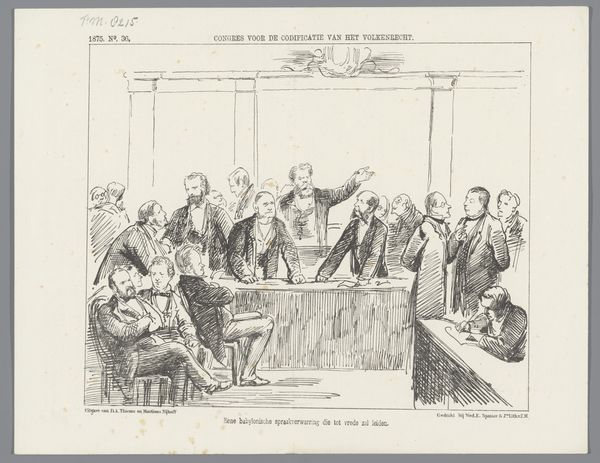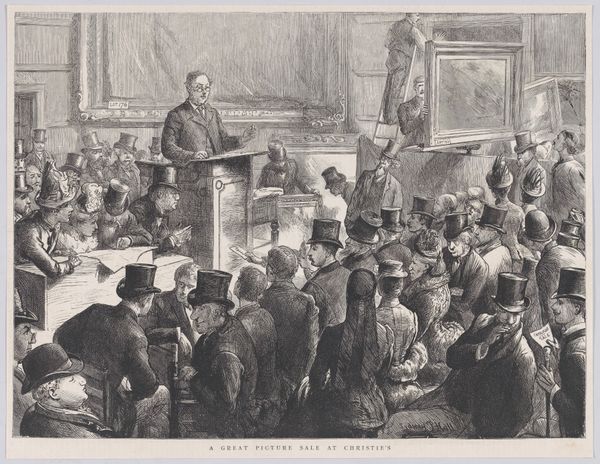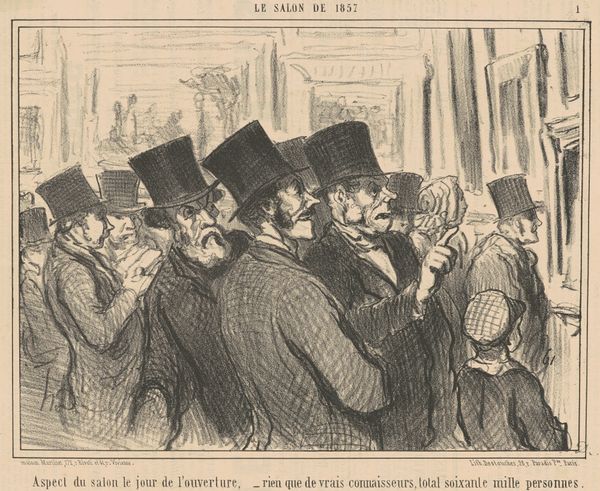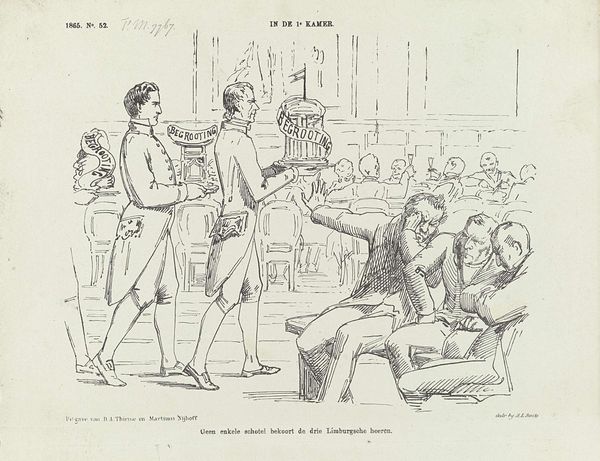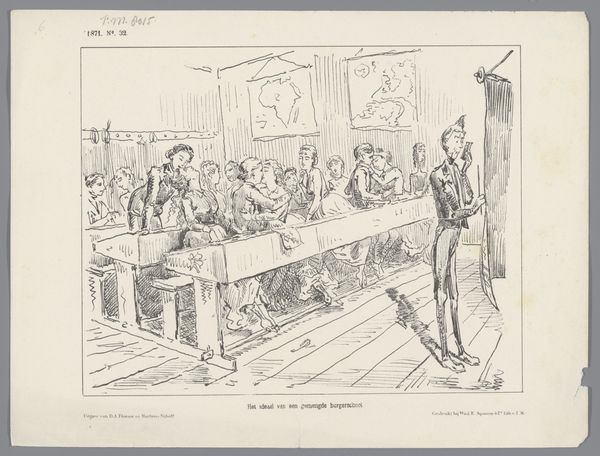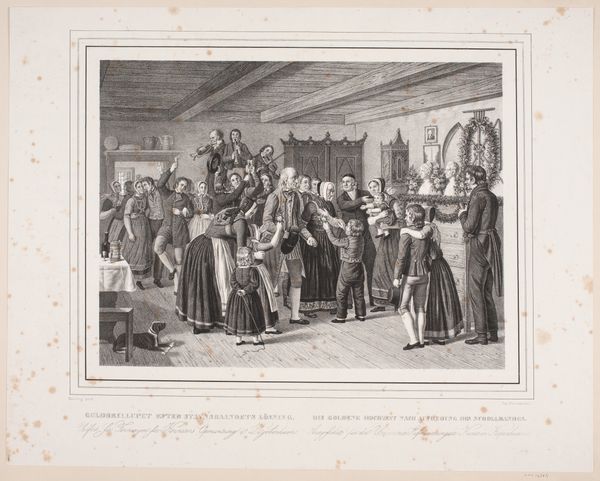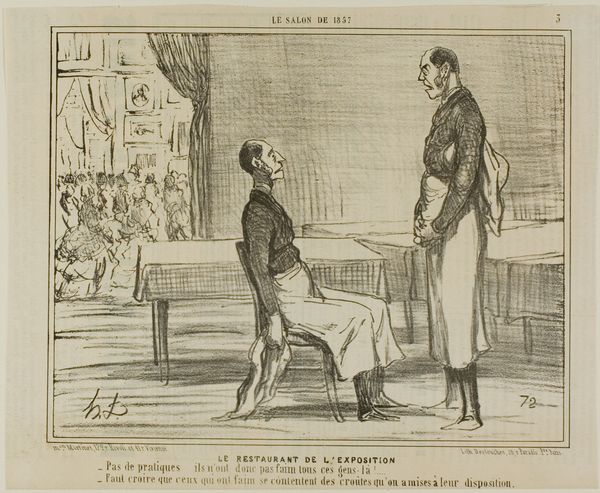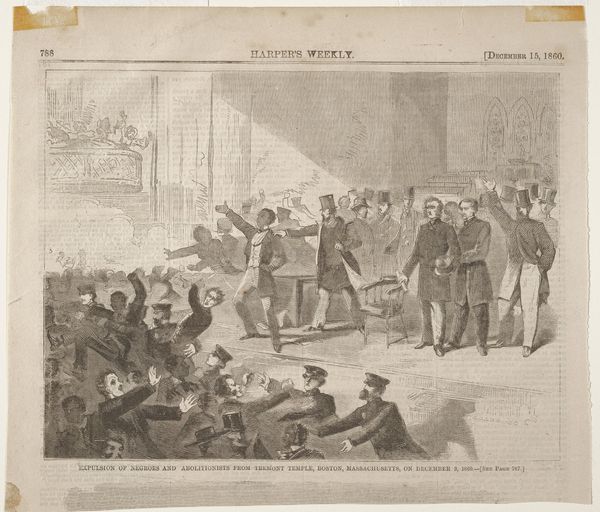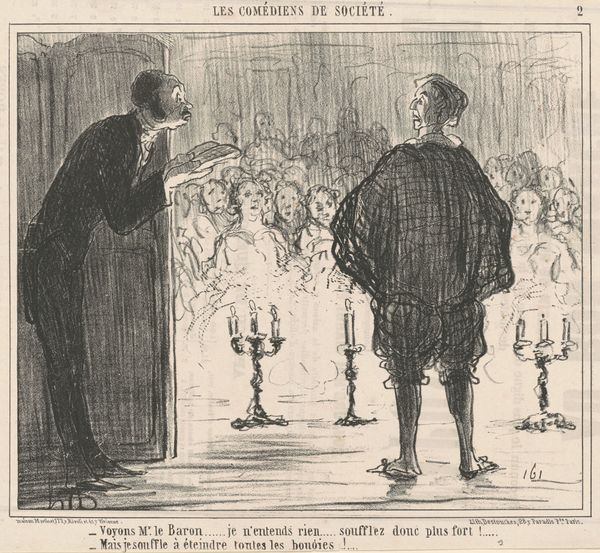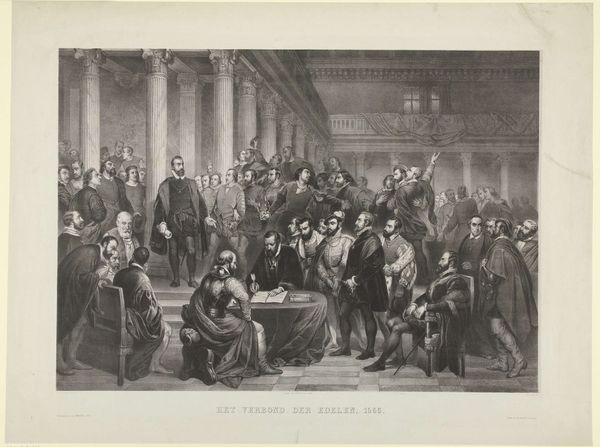
Spotprent over voorstel tot aanpassing op het recht op vereniging en vergadering in 1886 1886
0:00
0:00
drawing, paper, ink
#
drawing
#
narrative-art
#
caricature
#
paper
#
ink
#
history-painting
#
academic-art
Dimensions: height 260 mm, width 335 mm
Copyright: Rijks Museum: Open Domain
Curator: This is an interesting political cartoon by Jan Holswilder, made with ink on paper in 1886. Titled “Spotprent over voorstel tot aanpassing op het recht op vereniging en vergadering in 1886,” It definitely feels...critical. The looming police presence really sets the tone. What jumps out at you? Editor: I’m struck by how much the drawing emphasizes the materials of power – the policeman’s uniform, the desks of the officials on the raised platform… Even the wreaths hanging behind them feel like they’re made to project authority. Do you see that emphasis as part of the overall message? Curator: Absolutely. Holswilder is drawing attention to the literal materials and physical manifestations of authority – the uniforms, the architectural space, the printed law itself. Consider ink on paper; readily reproducible, inexpensive to disseminate the message. His process reveals how power operates materially. The medium reinforces its message. Editor: So, the choice of making a print, which could be widely circulated, becomes a challenge to that authority by subverting its means of communication? Curator: Precisely! The ability to mass-produce these images becomes an act of defiance. He uses the same tools to critique the very system of governance depicted, and questions who gets a platform for expression and on what terms. Is it an entirely effective critique though? He may simply become another actor in the theatre of law itself. Editor: That makes me rethink the whole composition. It’s not just a snapshot of a moment; it’s a commentary on how political action becomes a performance. Curator: Indeed. Looking at the print’s original location of dissemination would give you a further window on consumption and potential readership. It helps you appreciate the work's critical edge. Editor: Thanks, I never thought about how the artwork’s materiality could so strongly shape its political statement! Curator: And that political statement exists due to the convergence of labour and accessibility in its mode of making.
Comments
No comments
Be the first to comment and join the conversation on the ultimate creative platform.

